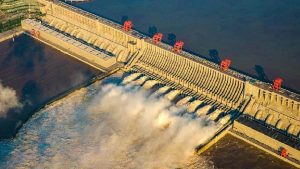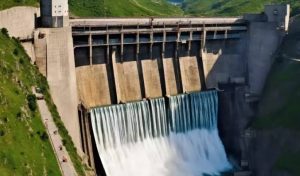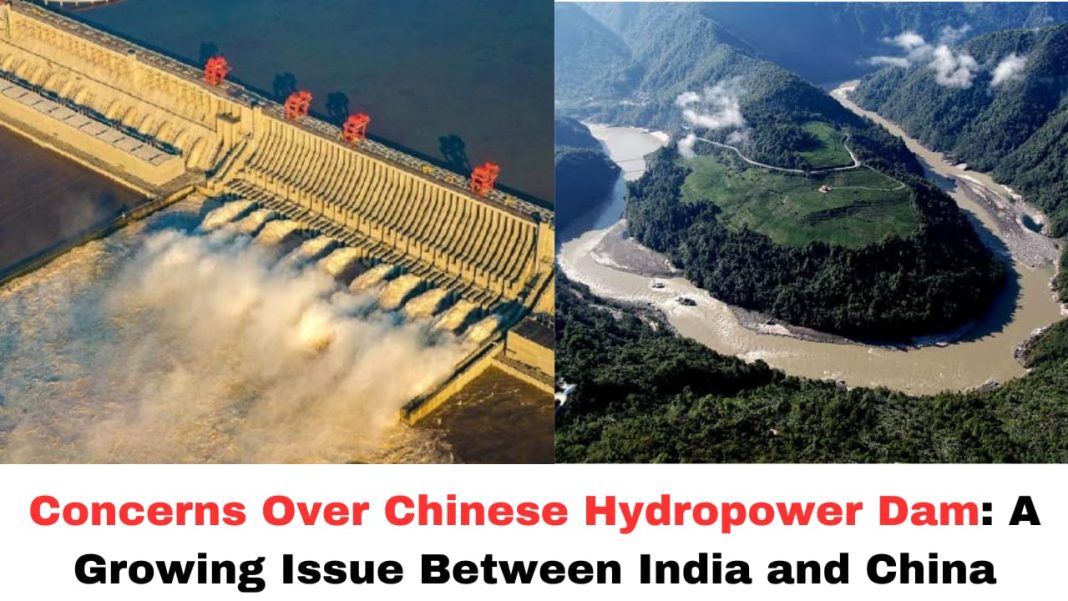Digital News Guru New Delhi Desk:
In recent developments, India has raised serious concerns about a proposed hydropower dam on the Yarlung Zangbo River in Tibet, China. The Yarlung Zangbo River, known as the Brahmaputra when it flows into India, has long been a vital water source for the northeastern regions of India and Bangladesh. With China planning to construct the largest hydropower dam in the world on this river, the issue has sparked anxiety in both neighboring countries. The proposed dam has the potential to generate 300 billion kilowatt-hours annually, a capacity that would make it one of the largest energy-producing projects globally. As the situation develops, India has voiced its concerns to China, particularly regarding the environmental, geopolitical, and socio-economic impacts the dam might have.
The Proposed Dam: The Largest of Its Kind
China’s ambitious hydropower project, which is located on the Yarlung Zangbo River in Tibet, is designed to produce an enormous amount of energy. The dam, with its 300 billion kilowatt-hour capacity, would significantly contribute to China’s growing energy needs. However, experts have warned about the substantial risks this project poses to the region and its downstream countries. The river, which begins its journey in Tibet, flows through the Himalayas, and is a crucial source of freshwater for over 300 million people in India and Bangladesh.

The project has been a topic of contention for years. Although China assures that the dam will not drastically impact the downstream flow of water, India is concerned that any changes to the river’s flow could cause a ripple effect, disrupting the lives of millions of people who depend on the Brahmaputra for agriculture, drinking water, and other essential services. The environmental and socio-economic consequences could be dire if there are significant reductions in water availability during critical periods such as monsoons.
India’s Concerns: Water Security and Ecological Risks
India’s primary concern regarding the Chinese hydropower dam is water security. The Brahmaputra is vital for agriculture in India’s northeastern states, including Assam and Arunachal Pradesh, and it also supports various industries, including fisheries. Any disruption in the river’s water flow could lead to a crisis, with millions of people potentially losing access to freshwater and irrigation systems. Given that the river is fed by snowmelt and rainfall, even slight changes in the flow could have serious consequences for those who rely on the river’s resources.
Moreover, environmentalists have raised alarms about the ecological risks associated with such a large-scale project. The construction of the dam could cause severe disruptions to local ecosystems, especially in the region’s rich biodiversity hotspots. The region is home to several endangered species, including the golden mahseer fish and the Indian rhinoceros, which could be adversely affected by any changes in water levels and river flow. Additionally, the construction of the dam in a seismically active area could increase the risk of earthquakes and landslides, with potential downstream impacts such as flooding and displacement of communities.
Geopolitical Tensions and Diplomatic Concerns
Beyond the environmental and ecological implications, the hydropower dam on the Yarlung Zangbo River also represents a significant geopolitical issue. The Brahmaputra River is shared between China, India, and Bangladesh, and all three countries have a vested interest in its water resources. India and Bangladesh are particularly dependent on the river, and any changes in the flow could exacerbate existing tensions between the countries.

India’s concerns are further heightened by the ongoing territorial disputes with China. The region of Tibet, where the dam is being constructed, is a politically sensitive area for India. The construction of the dam has raised suspicions that China may use the project as a tool for asserting its dominance in the region. In the past, China has been accused of using water as a geopolitical weapon, and India is wary that the dam could be used to manipulate the water flow to India’s disadvantage during times of conflict.
Furthermore, the construction of the dam follows a broader pattern of China’s infrastructural dominance in the region. China’s Belt and Road Initiative (BRI) has led to increased investment in infrastructure projects in neighboring countries, including Pakistan, Nepal, and Sri Lanka. This has raised concerns among India, which sees China’s growing influence as a challenge to its own regional power and security.
The Response from China
In response to India’s concerns, Chinese officials have sought to reassure their neighbors. They have insisted that the hydropower dam will not have a significant impact on the downstream flow of water, and that it will be operated in an environmentally responsible manner. Chinese representatives have pointed out that the dam is primarily intended to meet the growing energy needs of Tibet and the surrounding areas.
Despite these assurances, India and Bangladesh remain cautious. Both countries have called for greater transparency in the planning and construction of the dam. They have also urged China to share information about the project’s impact on the river’s water flow and the potential ecological consequences. International experts have also called for more cooperation between the countries, as such large-scale projects cannot be evaluated in isolation. Without proper data-sharing agreements and joint management of the river, the risks could be too great.
Moving Forward: The Need for Cooperation
The concerns surrounding the Chinese hydropower dam on the Yarlung Zangbo River highlight the importance of regional cooperation in managing transboundary water resources. As the dam project progresses, it will be essential for India, China, and Bangladesh to work together to ensure that the dam does not adversely affect the people and ecosystems dependent on the Brahmaputra.

Water diplomacy will be key to addressing the potential conflicts arising from the dam. Given the shared importance of the Brahmaputra River, it is imperative that the countries involved come to the table for transparent discussions, share data on water flow, and work toward a sustainable solution. Only through mutual cooperation can the risks be mitigated, ensuring that the river remains a vital resource for the people of India, Bangladesh, and China.
Conclusion
The proposed hydropower dam on the Yarlung Zangbo River in Tibet has raised serious concerns for India and Bangladesh, both of which depend on the Brahmaputra River for their water needs. While China assures that the project will not harm the river’s flow, the geopolitical, environmental, and socio-economic stakes are high. As the situation unfolds, it will be crucial for all parties to prioritize diplomacy, data sharing, and environmental protection to ensure that the dam does not cause lasting harm to the millions of people who depend on the Brahmaputra River.
You May Also Read: ISRO’s Spadex Experiment: A Game-Changer in Satellite Technology








